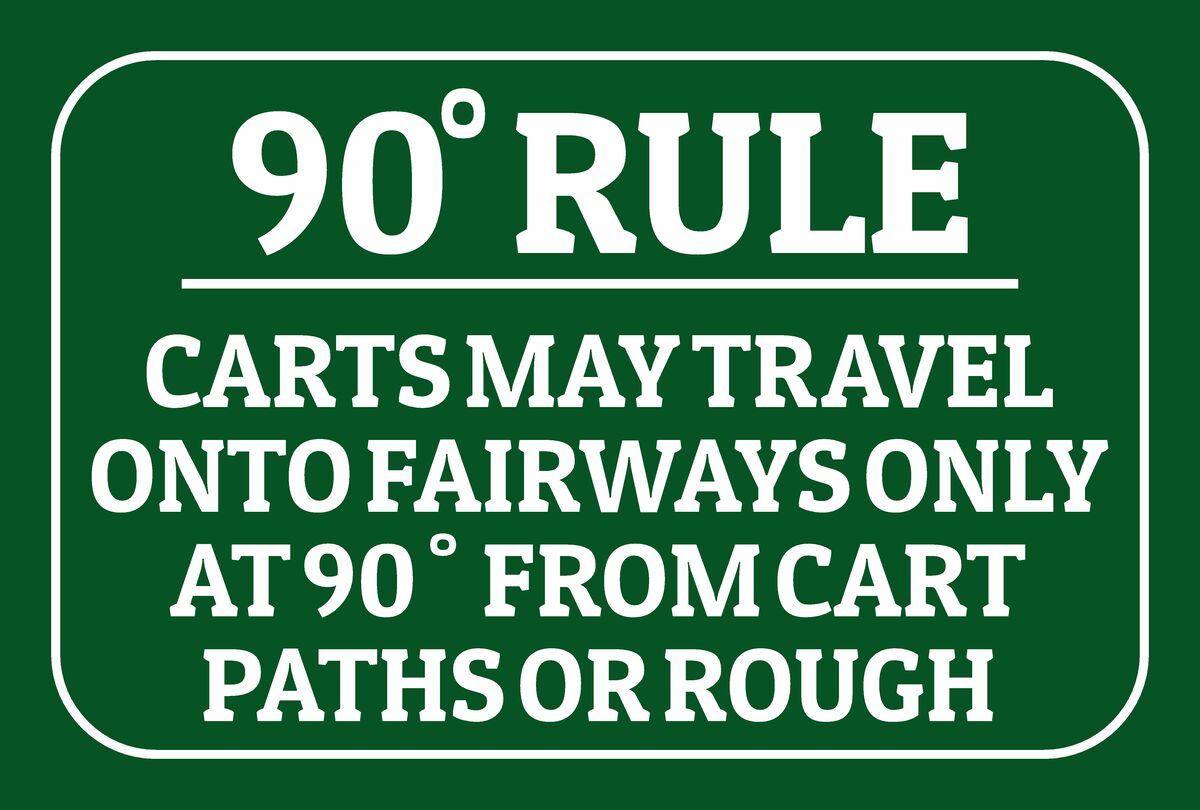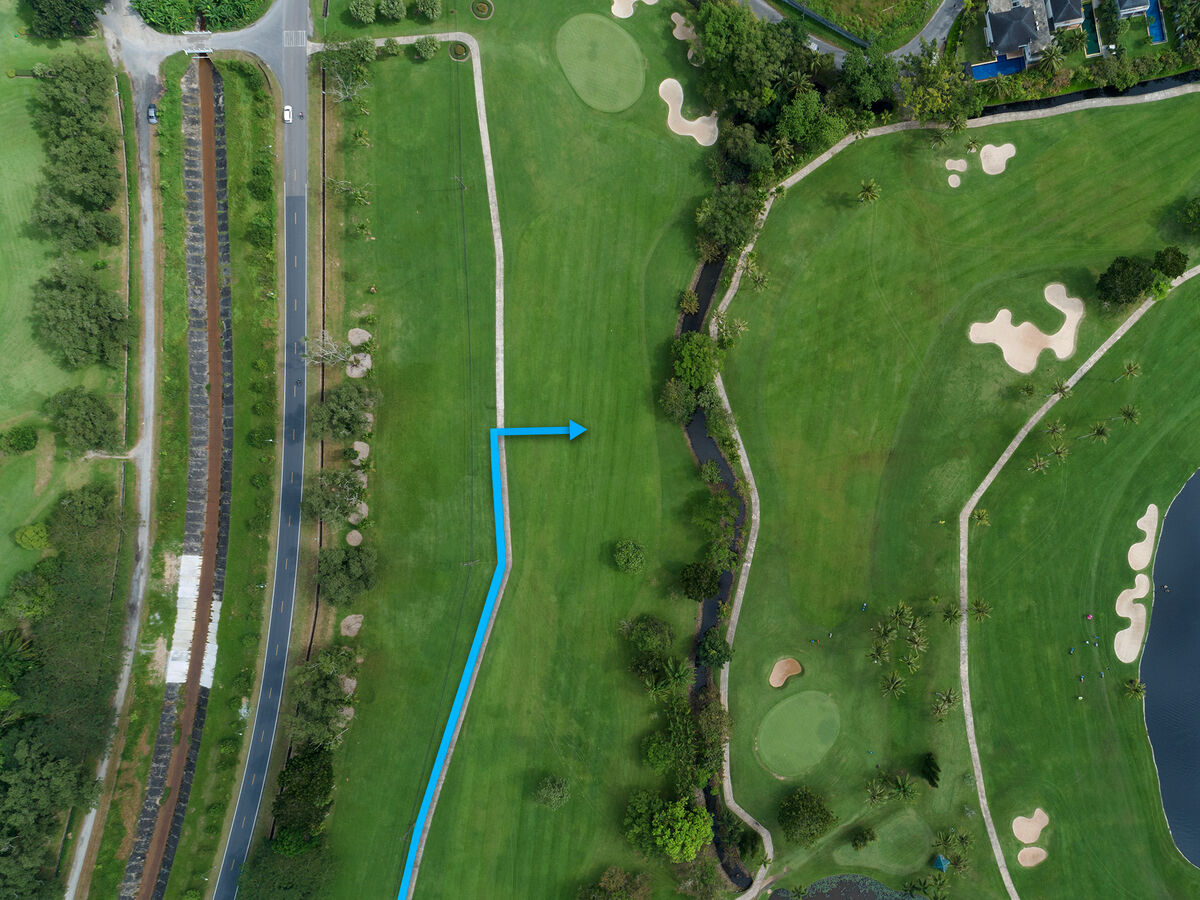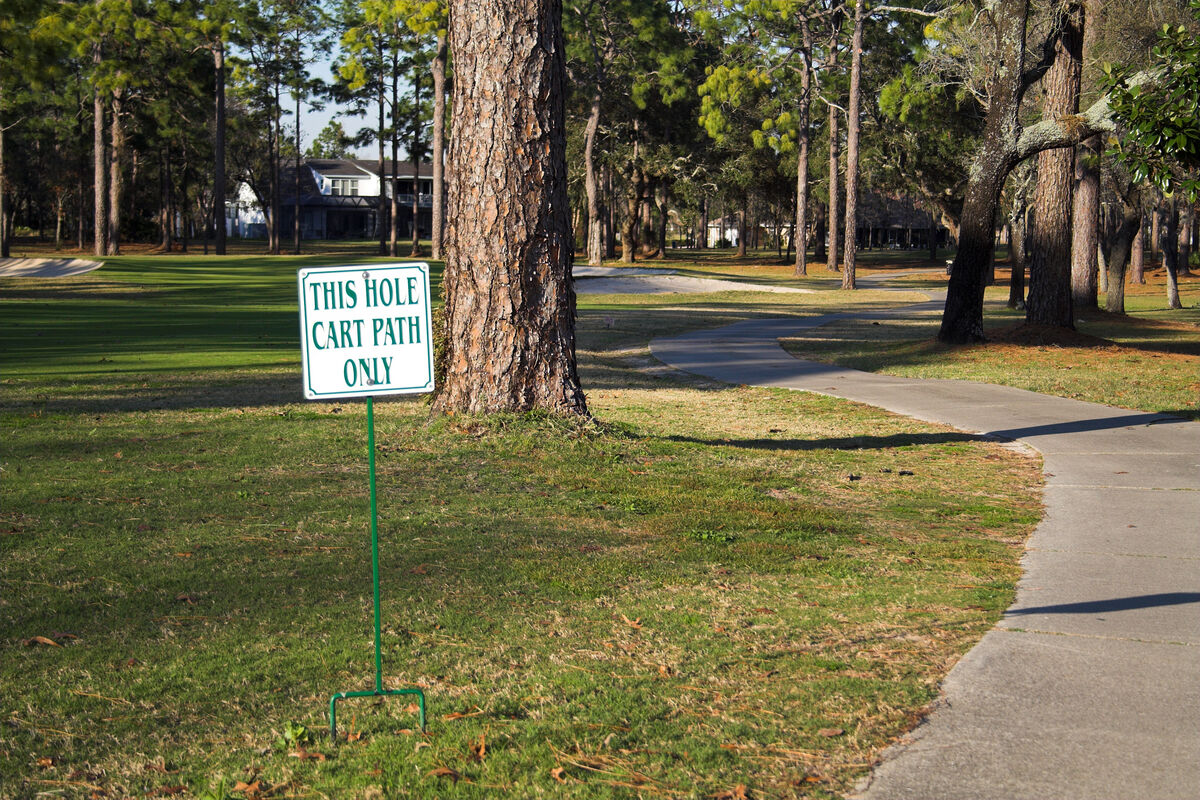Golf’s 90-Degree Rule Explained in Simple Terms

You’re set to tee off, and the starter tells you that a 90-degree rule is in effect for the day. If you don’t know what they’re talking about, and you don’t want to ask, you could stumble to the first tee under a cloud of confusion. Don't worry, we're here to help.
The 90-degree rule requires golf carts to enter the fairway at a 90-degree angle from the cart path to get to the ball. Here is everything you need to know about navigating the 90-degree rule on the golf course.
What Is the 90-Degree Rule in Golf?

The 90 degree rule requires golf carts to stay on the path until they can make a 90 degree turn to their ball
Golf courses exercise the 90-degree rule when the course wants you to stay on the cart path until you’ve reached the equal distance of your golf ball, then enter the fairway sharply at a 90-degree angle to get to your ball.
A 90-degree golf rule is typically in effect after a course has taken on water or undergone repairs. Think of it as the middle ground between the dreaded "cart path only" restriction, and no cart restrictions at all. The 90-degree rule keeps carts out of the fairway’s trouble areas where the ground might be too wet or soft to endure a ton of traffic. By limiting cart usage on fairways to the least amount of turf between the path and your ball, the course endures minimal wear and tear without too much of a hit to pace of play.
Whether a 90-degree rule is faster than walking is up for debate. If you have four players in a group who are all low handicap players and hit a lot of fairways, the 90 degree rule could be faster than walking. On the flip side, if you have four golfers who spray the ball left and right, a 90-degree rule could actually make a round take longer than if everyone was walking directly to their ball.
A 90-degree cart rule is usually necessary, otherwise, the course wouldn’t want to risk the chance of a slower-than-usual pace of play. If you decide not to abide by the rule, you’ll likely get a warning from a ranger or other staff member. A second offense could lead to you putting your clubs back in your trunk earlier than expected. It all depends on how forgiving the course is.
RELATED: Basic Golf Etiquette to Know Before You Hit the Course
Pro tip: If you don’t want to follow the 90-degree rule, just walk!
Other Golf Cart Restrictions

The 90-degree cart rule isn’t the only cart restriction you’ll run into. Here are three others.
- Cart path only: Carts must stay on paths only and not enter the grass at all. This is likely in effect after heavy rainfall or on courses that have recently completed renovations.
- Fairways only: This is worded differently in different areas of the U.S. In some places, this is the equivalent of the 90-degree rule. In some areas, this means that courses would prefer you drive in the fairways.
- Walking only: No carts are allowed anywhere on the golf course. This is sometimes a temporary course rule, but other courses have this rule permanently.
- Par-3 holes: On many golf courses, driving anywhere off of the cart path on a par-3 is prohibited.
- No carts beyond: A common sign you’ll see will read, “no carts beyond this point.” This is usually the area within 50 yards or so of the green.
Tips For 90-Degree Rule Days
Here are a few tips for navigating a 90-degree cart rule.
- Drop off your passenger. If you need to search for your golf ball and your partner is comfortably in the fairway, drop him/her off at their ball and then go search for yours.
- Prime positioning. Angle your cart in the best way to stay out of the swing path of you or the people you’re playing with.
- Go slow. If the fairways are wet, you’ll damage them by going too fast or slamming the brakes.
It Could be Worse
Keep in mind that hearing that a 90-degree rule is in effect doesn’t mean your round is doomed. Cart path only is much worse and can make for a long day. Remember, there are worse places you can be in life than on the golf course, even when restrictions are in place.